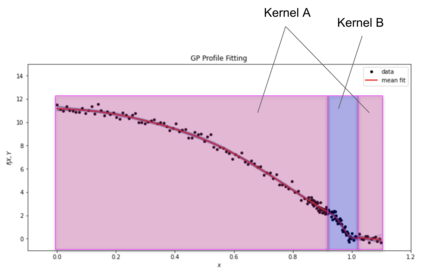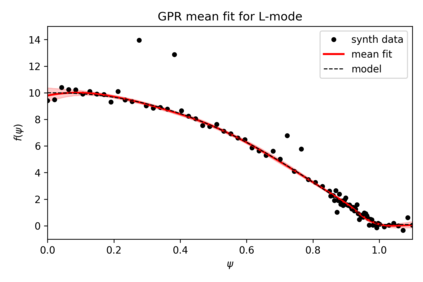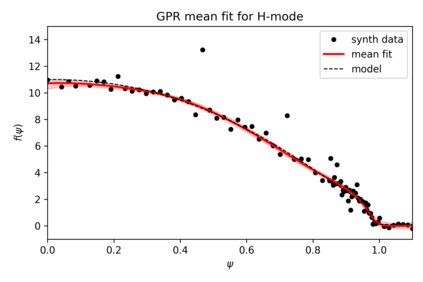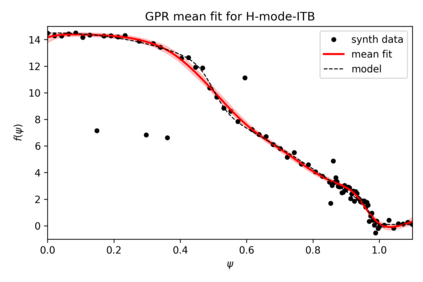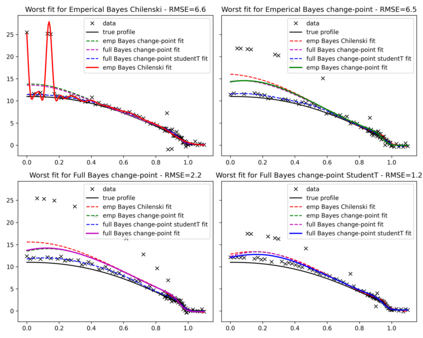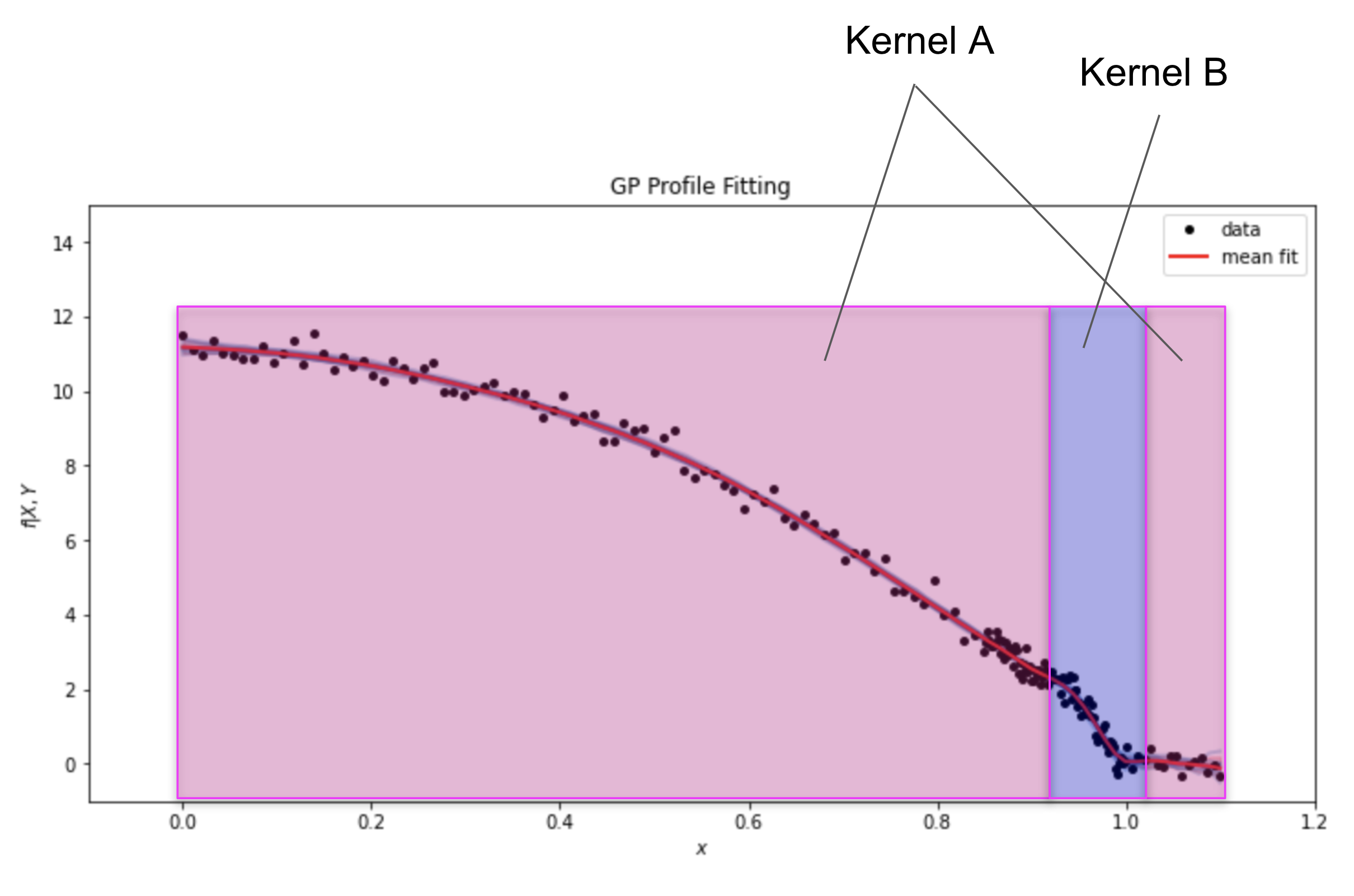Gaussian Process Regression (GPR) is a Bayesian method for inferring profiles based on input data. The technique is increasing in popularity in the fusion community due to its many advantages over traditional fitting techniques including intrinsic uncertainty quantification and robustness to over-fitting. This work investigates the use of a new method, the change-point method, for handling the varying length scales found in different tokamak regimes. The use of the Student's t-distribution for the Bayesian likelihood probability is also investigated and shown to be advantageous in providing good fits in profiles with many outliers. To compare different methods, synthetic data generated from analytic profiles is used to create a database enabling a quantitative statistical comparison of which methods perform the best. Using a full Bayesian approach with the change-point method, Mat\'ern kernel for the prior probability, and Student's t-distribution for the likelihood is shown to give the best results.
翻译:Gausian 进程递减(GPR) 是一种基于输入数据的贝叶斯推算剖面的方法。 这种技术在聚合社区中越来越受欢迎,因为它比传统安装技术具有许多优势,包括内在不确定性量化和强度过大。 这项工作调查了使用新方法,即改变点方法,处理不同托卡马克制度中发现的不同长度尺度。 对巴伊西亚概率使用学生的T分布也进行了调查,并显示在向许多外层提供良好剖面方面很有优势。 为了比较不同的方法,使用分析剖面生成的合成数据来创建一个数据库,以便能够对哪些方法最优秀进行定量统计比较。 使用全巴伊西亚方法, 使用变点方法处理先前概率的Mat\'ern内核, 并显示学生对可能性的T分布能够产生最佳结果 。

